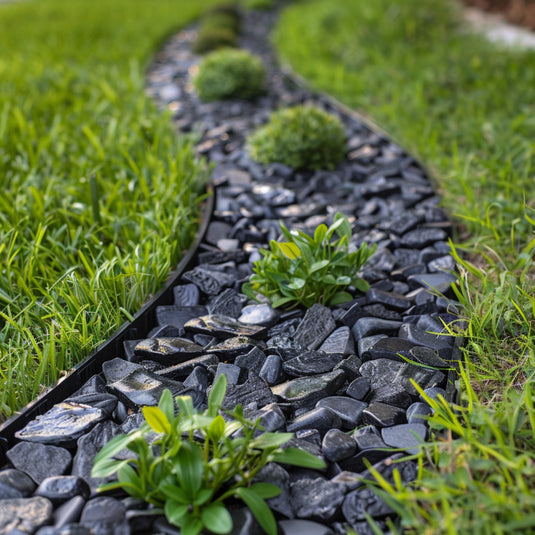Extra large gravel grids save installation time but push the price up. Here's why size matters.
If you're an installer, you've probably been tempted by using extra-large gravel grids. The sales pitch sounds brilliant - fewer pieces to lay, job done quicker, what's not to love? But here's the thing: they're actually costing you more money than you think.
The Big Grid Promise
We get it. When someone shows you an extra large grid (with some measuring in at 800mm x 1200mm) versus loads of smaller ones, it seems obvious which one's better. Less messing about, fewer pieces to handle, get home earlier. The manufacturers love telling you how much time you'll save. And to a point, they're right - you will save a minute per square metre. If you've ever laid 330mm grids (especially the interlocking ones), it's a real faff clicking together that many grids.
The Reality Check
But here's what they don't tell you. How often do you work on jobs where everything fits perfectly? Never, right?
Real driveways aren't nice neat rectangles. You've got awkward corners, manholes to work around, and dimensions that never quite add up. When you're using massive grids, you end up cutting loads more off and chucking it in the skip.
Think about it - if you need to trim 200mm off a small grid, you waste a bit. Trim 200mm off one of those massive grids and you're binning a chunk worth several quid.
You can find out exactly how much these offcuts will set you back.
What Actually Happens on Site
The Cutting Problem: Big grids mean big offcuts. Every time you need to fit around something or trim to size, you're wasting expensive material.
The Handling Hassle: Ever tried getting an 800mm x 1200mm grid through a narrow side gate? Or carrying one down some steps on your own? They're heavy and awkward. Sometimes you need two blokes just to move them about.
Delivery Issues: the bigger the grid, the bigger the delivery. And when you've ripped up the ground, the last thing you want to do is drag a pallet through the sub base you've just laid. It's hard work and will rip up your hard work.
Working Round Obstacles: Got a drain cover or tree to work around? Small grids are dead easy to adjust. Big ones? You'll be reaching for the angle grinder again.
The Sweet Spot
Most installers who've done the sums properly reckon 500mm x 500mm is about right. Here's why:
- One-person job: You can handle them easily on your own
- Gets everywhere: Fits through most gates and tight spots
- Less waste: Easier to use up the offcuts on awkward bits
- Flexible: Simple to work around obstacles
The Bottom Line
Don't just look at the price per grid or how fast you can lay them. Think about:
- How much you're throwing away in cuts
- Whether you need extra help moving them about
- If they'll actually fit through the customer's gate
- How much messing about you'll have with obstacles
The Hidden Costs You're Paying For
Here's something else to consider - those massive grids cost more to make in the first place. They need bigger, more expensive machinery to manufacture. They're heavier and bulkier to ship, so courier costs are higher too. Guess who's paying for all that? You are, through higher unit prices.
If they are able to price match a smaller grid, then something else has to have been compromised to get to that price. Deliveries are expensive, energy cost for the factory always go up and wages aren't going down, so the only thing that is getting reduced is the plastic quality. Are you sure you want to lay this stuff?
So you're paying extra for the privilege of wasting more material. Doesn't sound like such a good deal now, does it?
Think Before You Buy
The next time someone's trying to sell you massive grids because they're "more efficient," have a think about your last few jobs. How much would you have wasted? How much extra hassle would they have been?
Sometimes the old ways are the best ways. Smaller grids might mean laying a few more pieces, but they'll often save you money overall and make your life easier.
Your van's already full of expensive kit that doesn't earn its keep. Don't let oversized gravel grids join that list.






